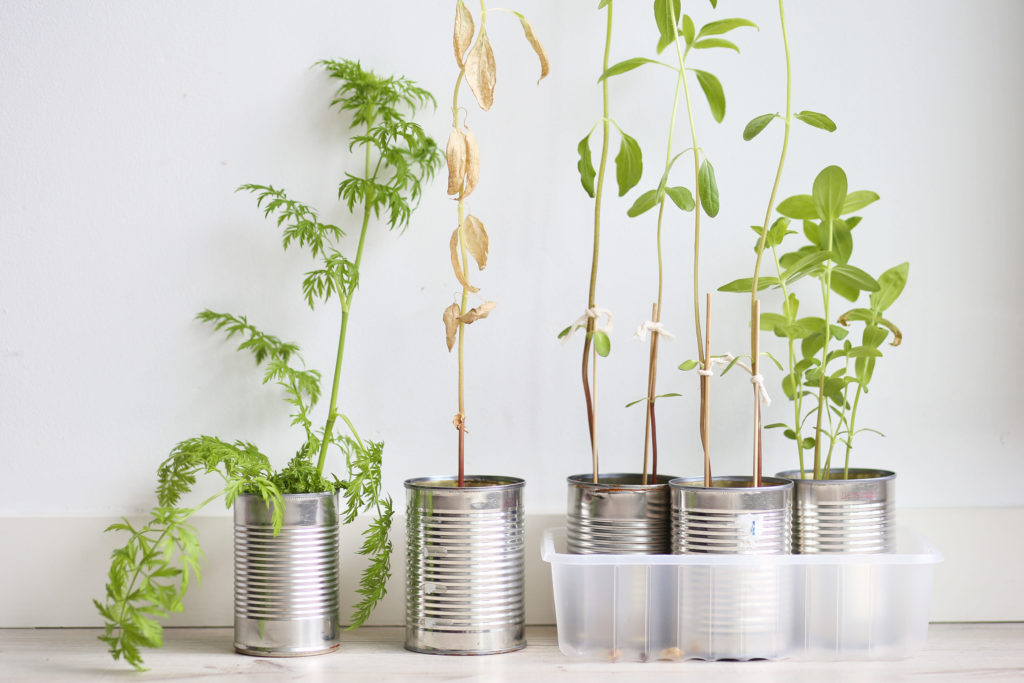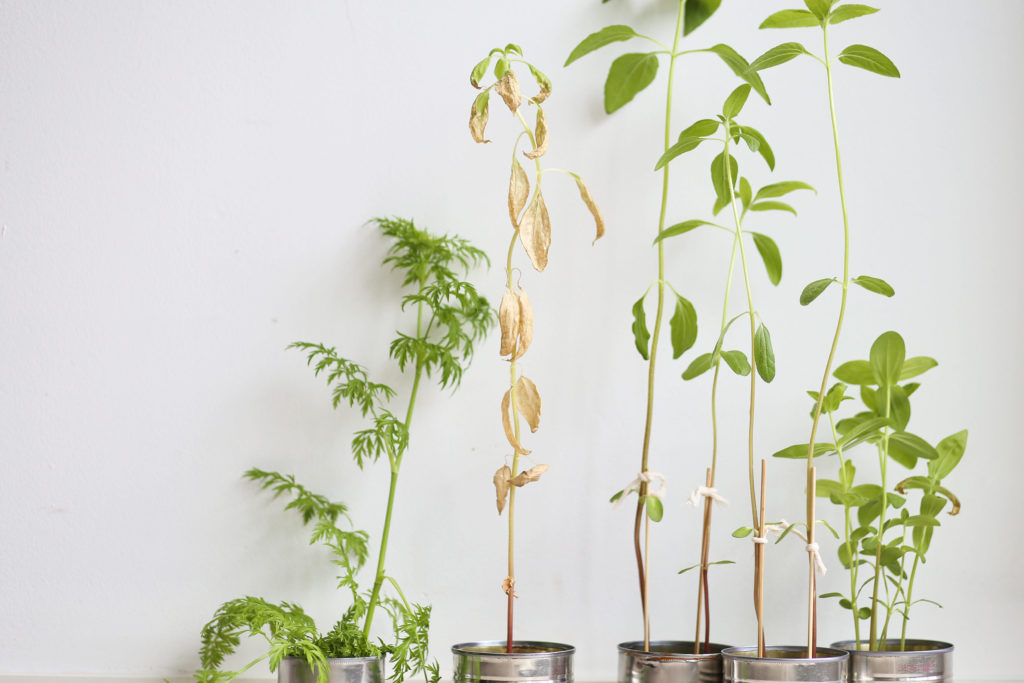With lockdown and social distancing measures in place over the last few months, I decided it was a great time to take on a new hobby. That’s why I created my very own indoor garden. I have found myself with a lot more time on my hands lately and also the urge to reconnect with nature. Indoor gardening has provided a therapeutic environment as well as a bit of a challenge.
Here’s how I created my indoor garden for little to no cost:
1. Upcycled Plant Pots
I used tins from shop-bought tinned food, poked holes in the bottom of each one and placed them in hard plastic containers. It’s really important to have holes in the bottom of whatever pot you are choosing to upcycle so that water can drain freely. This is because most plants don’t like to sit in water. I placed the tins in plastic containers to protect my window ledges from rust. The plastic containers also collect any excess water that drains out of the tins.

2. Borrowed Soil
As I was only filling a few tin cans with soil, I didn’t feel the need to purchase a huge bag of soil. Instead, I headed over to my local zero waste Facebook group and uploaded a post. It wasn’t long before I found someone in my neighborhood who had both soil and seeds to spare! The type of soil you need to use will depend on what you’re planting. For example, if you’re growing succulents, potting soil will most likely work best.
3. Regrowing veggies
Although I planted some shop-bought seeds passed on from my neighbor, I also wanted to experiment with growing plants from my veggie cut-offs. I have so far challenged myself with growing plants from avocado stones, carrot tops, lemon seeds and spring onion roots. Spring onion and carrot tops have been the most successful. Simply place your cut-offs in water for a few days until you notice the roots begin to grow. At this point, you may even notice some growth and new life. Transfer the plant to your pot of soil, planting it about 1 inch into the soil. Cover it over with a bit more soil, lightly water and wait for your plant to come to life.
Troubleshooting tips for your indoor garden
Plants require lots of love and care. Ensuring your indoor garden gets enough light, water and nutrients will be key to keeping your plants thriving. Although conditions mostly vary from plant to plant, there are some key factors to bear in mind for indoor garden success.
1. Watering
Both underwatering and overwatering plants can lead to disaster. As indoor plants are more prone to overwatering, it is important to recognize the symptoms of an unhappy plant. With overwatering, roots can begin to drown and eventually die. You may even notice mould or mildew on the plant as well as the soil. With underwatering, lower leaves tend to turn yellow and often wilt. This is a sign that the plant is drying up and will eventually die. Make sure to check the dampness of your soil often to evaluate its dryness.

2. Sunlight
Some plants can actually experience sunburn when directly aligned with the sun. Leaves can turn brown and growth may be affected. However, some plants thrive in the sun and rely on ample sunshine to survive. If you notice your plant is getting sunburn, try moving it out of the sun and if that doesn’t make a difference, you may find yourself with a watering or nutrients issue.
3. Nutrients
Potted plants often need fertilizing regularly. Iron and nitrogen deficiencies can be common with indoor plants. Usually, this can be seen when the leaves turn brown and wilt when the stems are still green. Purchasing an indoor plant fertilizer and following the instructions on the packet can help prevent any nutrient deficiencies.

4. Room temperature
Providing your plants with a low-humidity environment and a stable indoor temperature will allow them to flourish and grow with ease. Make sure that when positioning your plants they aren’t directly near a hot air vent or a cool draft. Most plants do not enjoy extreme hot or cold temperatures. Get to know your plant and its needs before deciding its permanent home.
5. Pot size
Generally, indoor plants grow best in smaller pots. When soil loses moisture slowly from being in a large pot, root rot can form. Start your plants in small pots and replant in bigger pots as they grow. This can help with ensuring you’re not over or under watering as well as giving the plant time to establish its roots.
Creating an indoor garden takes time, care and effort. Regularly checking on your plants and evaluating their symptoms can help your garden to thrive. If you recognize your plant is struggling, try some of the troubleshooting tips above and get it back on track in no time.
Also by Anna: 5 Simple, Sustainable Lifestyle Changes You Can Make
Get more like this—Sign up for our daily inspirational newsletter for exclusive content!
__
Photo: Anna Ashbarry




